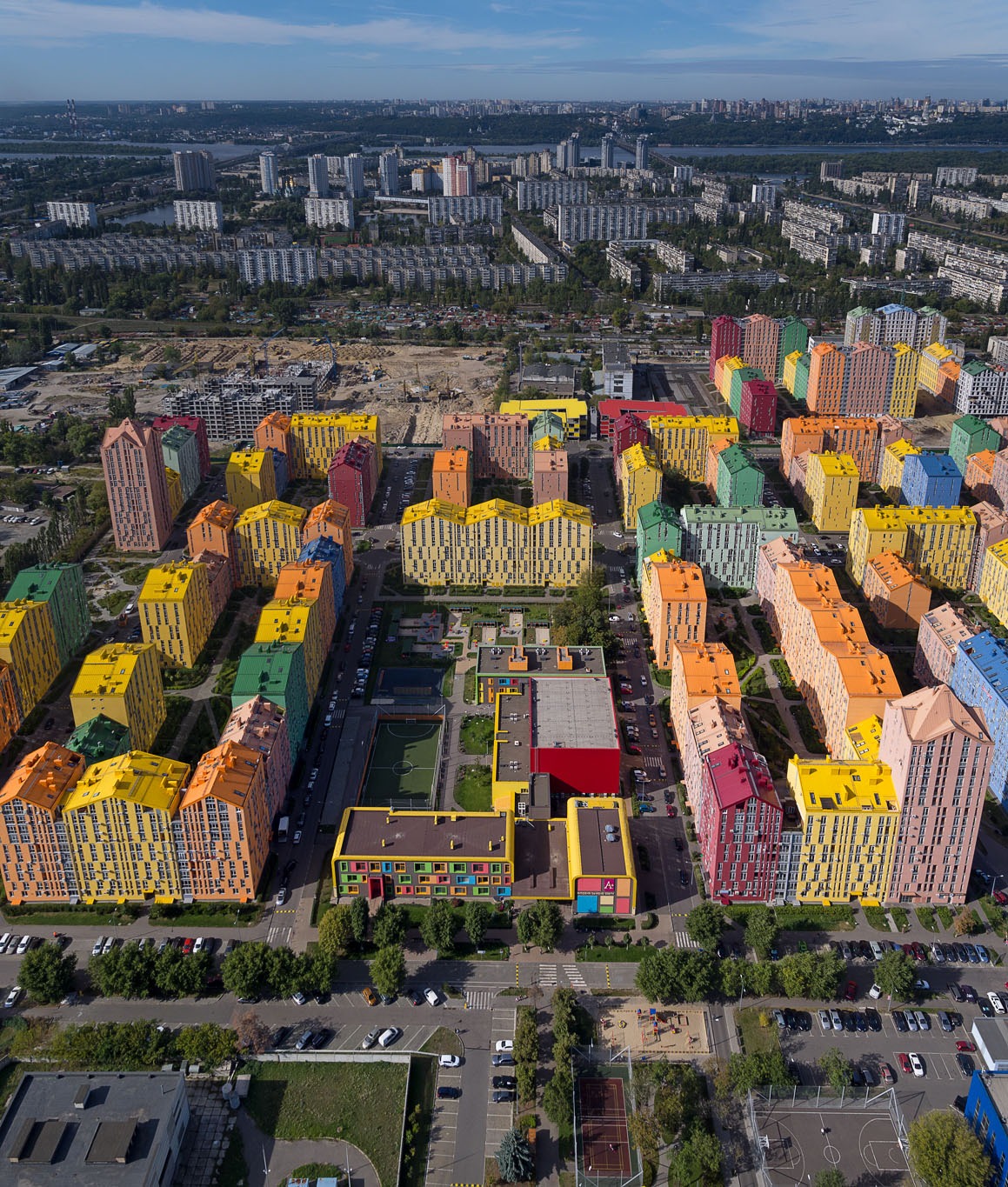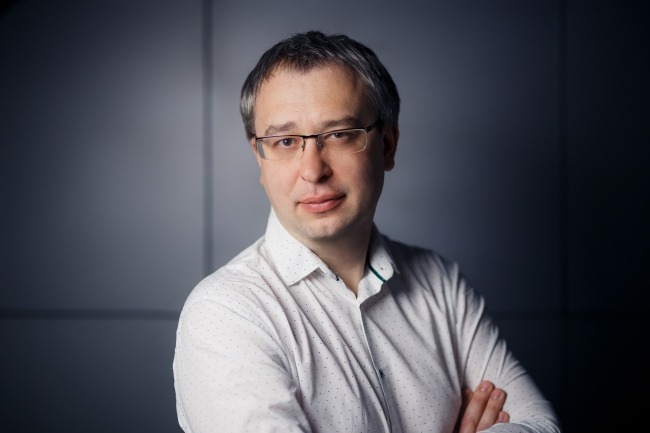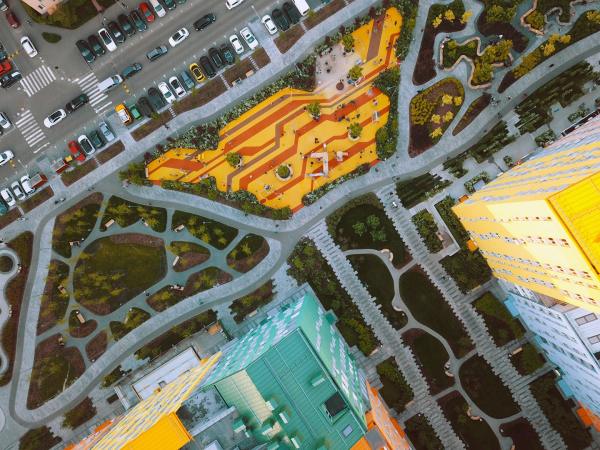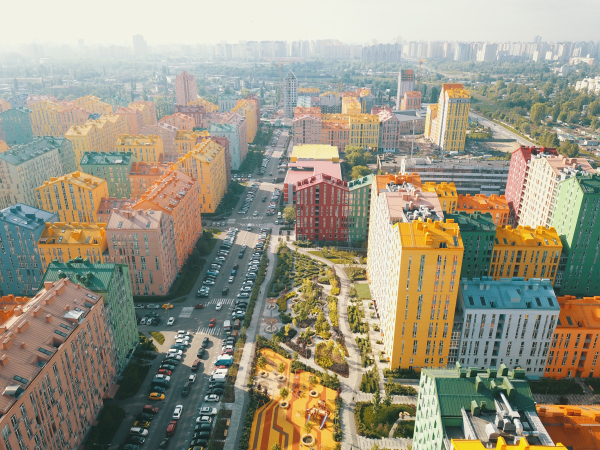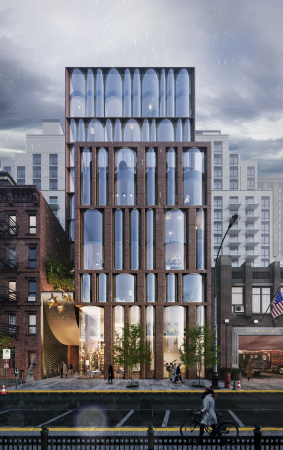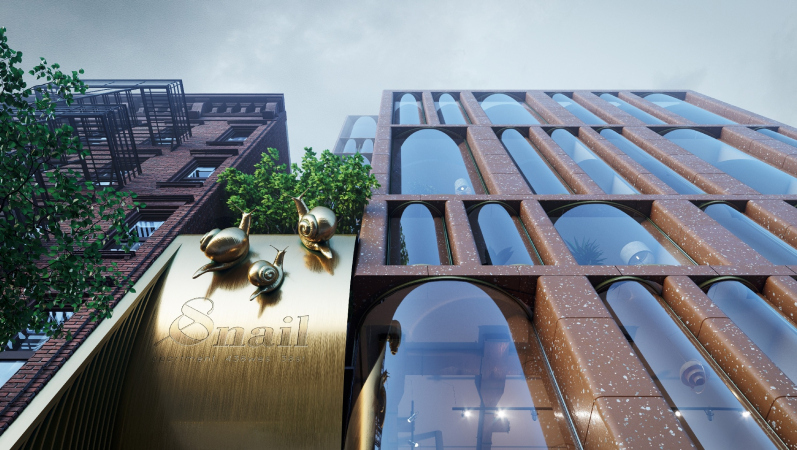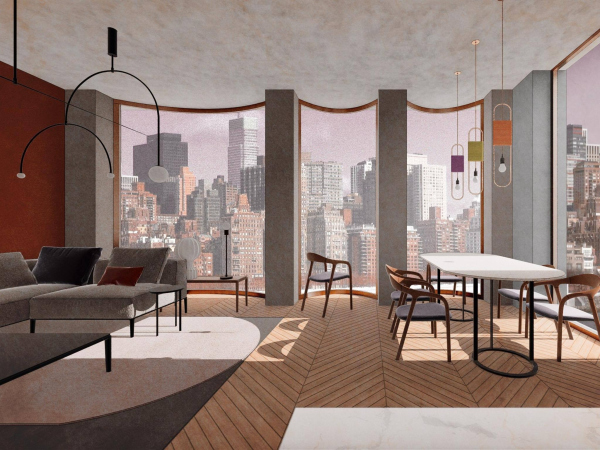Archi.ru
What is your attitude towards project competitions and project awards? What guidelines do you follow when you decide, in which festival you will take part, and in which you will not?
Alexander Popov
Copyright: © Archimatika
Alexander Popov,
The leader of Archimatika:
We did not have any special doctrine – WAF attracted us with the lineup of the projects that got shortlisted. Two years ago we went to Berlin to see how the whole thing was organized. We really liked the atmosphere, and we wanted to be a part of it – not as visitors but as exhibitors. We selected the projects that we thought were worth showing, and one of them got shortlisted. That was very inspiring – we did not even expect that you could simply sign up for the competition and get shortlisted. Because any competition is a lottery to a large extent! What is objective, however, is the certain classification, qualification, and professional bar, below which the project simply cannot drop. If you, let’s say, don’t get shortlisted this year but get shortlisted next year, yes, you could say that you were just lucky. But if you don’t ever get shortlisted, you might want to consider your professional level. This is a pleasant bonus to your professional activity that allows the architect to stop being alone one on one with the world and find himself in a great company of fellow colleagues.
Do you make a difference between the awards: what is valuable for you, for example, and what can make an impression on your potential client?
A.P.: I would say that what’s most important for us is the pleasure of professional communication because there’s no pragmatic reason in this world that can explain why somebody would do architecture 24/7. There are contests that you really enjoy taking part in, and there are contests that we would not participate in, even if we got paid to do that. And there are also competitions, in which we take part “by proxy” – meaning, the project is submitted by our developer. As for developers, they do have a purely pragmatic reason: the investment status of the project. When the bankers are making a decision about the loan, they can go by this rationale: “this project has scored so many awards and professional accolades; it’s got so many stars on the fuselage...” We don’t like playing these games but our developers have to. In defense of such events I can also say that sometimes you get involved into interesting dialogues there, make new contacts and acquaintances. And this is not just about pleasure – this is also about business. These contacts generate a stream of activity, including projects and money. It’s impossible to calculate how much money we spent on WAF last year and where exactly we got the return on investment. We landed this or that commission not just because somebody saw us at the festival: we have an attractive website, our company is generally pretty active, there was an article about us in this or that publication; or the client simply may have called up his colleague, and he said “Yes, these are great guys!” What ultimately influenced the client’s buying decision? You cannot pinpoint this factor. But if the architectural communication brings you pleasure, you have to learn how to find projects and make money.
Getting pleasure from your work is very important. But this cannot be the only thing that motivates you?
Alexander Simonov
Copyright: © Archimatika
Alexander Simonov,
The manager of the competition branch of Archimatika:
In addition to getting pleasure from mingling with the professional community, taking part in competitions allows you to feel the momentum, to evaluate whether you are in the trend of today’s architectural thought or are falling behind. Or, as the case might be, whether you are so much ahead of time that it would be wiser to unveil your ideas only in a couple of years, when the rest of the world is ready to appreciate it. WAF is a unique venue; a place where you can see a friendly battle between, let’s say, Pierre de Meuron and some emerging Australian hipster company consisting of four people, and the odds for the victory will still be equal. It all depends only on who will defend his project, and how. Sometimes you see a category and think to yourself: well, I see Zaha Hadid Architects on the contestants’ list, these guys are going to win, it’s all settled. And they don’t even get shortlisted for consideration – instead, they shortlist some totally unknown architectural company of 10 people that made a house that’s really high quality, pouring their soul into it. When the members of the judging panel see a project, and the first question that comes to their mind is “Is it really possible to do this crazy thing?” it’s a 50% probability that your project will get shortlisted.
Norman Foster may be a legend in the outside world, that’s true. But when he’s inside, he is just your fellow colleague who came to defend his project or read a lecture. WAF is a place where everyone is equal. All the architects’ snobbery is erased here. People become open, welcoming, and totally ready for contact.
This year, we submitted two projects. We were not really sure of one of them, but as for the other, I was 100% sure that it would pass. This is one of our high-profile works – the housing project “Comfort Town”, 40 hectares of multicolored houses. This project is ten years old. The company KAN Development has been building it in stages, and the last houses will be put into operation in 2020. And the architectural solutions that we used in it are still relevant today. This is to say that ten years ago we were already ten years ahead of Europe and the rest of the world. This is great – to take pleasure from the fact that you are on the architectural trend of today, that you are ahead of the mainstream, that you share your ideas with your colleagues, and that your project got shortlisted.
Why did you have doubts about your other project?
A.P.: The first project was the housing complex Snail Apartments in New York, USA. WAF is pretty much European in many respects, and only five-eight percent of American projects used to be shortlisted. Besides, housing is essentially a mass of product, 70% of the world’s architects design it. And there are categories, in which only twenty projects were submitted – the chance of getting shortlisted in them is significantly higher.
What was the most difficult thing for you during the presentation of your project?
A.P.: The main difficulty was to make a presentation about your work in good English. They say that nobody was able to understand Aldo Rossi’s English. So, it’s very important to be able to get your message across in the international language. There are two major constituent parts of any presentation. The architectural part is your solution, your structure, and your rationale. And the context – social, cultural, geographic, climatic, economic, and so on. It’s important to share about these two sides, how they are interconnected, and how they complement each other. Last time we did it, when we were four minutes into our presentation, the jury asked us to focus more on the architectural solutions. This year we will try to make it not two stories but just one.
Nowadays, many people use video and animated graphics in their presentations. In addition, what also matters a lot for the WAF judging panel is the social significance. Will you use any new techniques in your presentation? Will you consider the WAF specifics?
A.P.: Well, if we are to speak about “new tricks”, well, let’s just go ahead and present architecture with a beautiful dance. Speaking on the subject of video, I honestly don’t think it’s the right format because we ultimately are not trying to make a flashy impression on people but we are talking to our colleagues, piers, and professionals, and the architectural evaluation requires a static image that allows you to concentrate for at least several seconds and consider what you’re seeing. Since our first exposure to the festival, we started thinking about the culture, and about the connections not after the project is completed but from the moment that we get introduced to the client and see the future construction site. This is the algorithm that gets turned on the moment you understand that there will be a point in the development of the project when you will be able to make a stop share about it. Working on the current project, we answered the question that we got at last year’s WAF: what cultural specifics of the residents of the complex did we have in mind, and how was it reflected in the architecture? And now, doing projects in New York, we thought about it from our first exposure to the client. And we created houses for some certain lifestyle, and some specific cultural peculiarities.
The special atmosphere at WAF: the absence of hierarchical division. Perhaps, the architectural professional community is striving towards a horizontal system of interaction because a vertical system with “star” architects is at odds with the professional culture?
A.C.: As a matter of fact, some part of this vertical star thing does remain. This manifests itself in the fact, for example, that you just cannot get admitted to a presentation by a world-famous architect. When ZHA, Thomas Heatherwick, and Foster+Partners were doing their presentations, it was a real crowded house. Still, though, later on, nobody stopped you from approaching all of them and making your acquaintance. These people are open. And we all realize that all architects have one common cause – they create the world around us, regardless of what country they are based in, or how many “stars” their company has. This is how you erase the borders.
A.P.: I would even add: the reason for this vertical hierarchy and the fact that some of the “stars” are unapproachable is because they can be very private and afraid of some inadequate freak breaking into their privacy. And the reason why such barriers are virtually nonexistent in the world’s architectural community is very simple: we’ve got a very decent and sane audience.
I would like to ask how well the Ukrainian architecture fits in with the world’s context, and how the Ukrainian architects struggle for a place in the sun. Is this question relevant for you?
A.P.: The right answer: of course, it is.
The right answer or the truthful one?
A.P.: The right and partially truthful. The completely truthful answer will have to be slightly wider because architecture is global. A completely “national” architecture is only possible in a totally isolated state that has shut itself off from the outside world. In all other cases, to this or that extent, there is an exchange of ideas going on, as well as solutions, implementations, professional jealousy and admiration for your foreign colleagues. And in this respect the architects can be subdivided not so much into national schools as schools of thought. There are architects out there, for whom their social mission is more important than architecture per se, and there are those for whom the quality of the design solution matters the most. And I think that some Spanish architect who feels the same as me about some key points will be much closer to me than some Kiev colleague with an office a block away from me, but going by different methods. This is why, in this global world, the architectural values bring us much closer together than our national identity.
Probably, it is all about our understanding of social order. And this question was really relevant for me in the nineties when I was a student. Because during that time the society and the reality in the United States, Western Europe, and Japan, was vastly different from our post-Soviet reality! And this gap made it impossible to create in the Ukrainian context the architecture that would stand up to the level of the international school. Such border is nonexistent now, and some great solution that was developed by our colleague in some European country can be successfully implemented here. A European architect is confronted with the same questions that we are. Yes, there are climatic differences, and peculiarities of people’s mentality, but we still in one and the same cultural environment.
Can you please share about the modern architecture and architects of Ukraine?
A.P.: I can only say that there are some great architects here who design great buildings. Take the Library of the Lviv University, for example, designed and built by Stephan Behnisch and Julian Chaplinsky – I seriously consider it to be the best new building in the entire Ukraine. This is such a rich subject that I would suggest that we address it in another interview.

